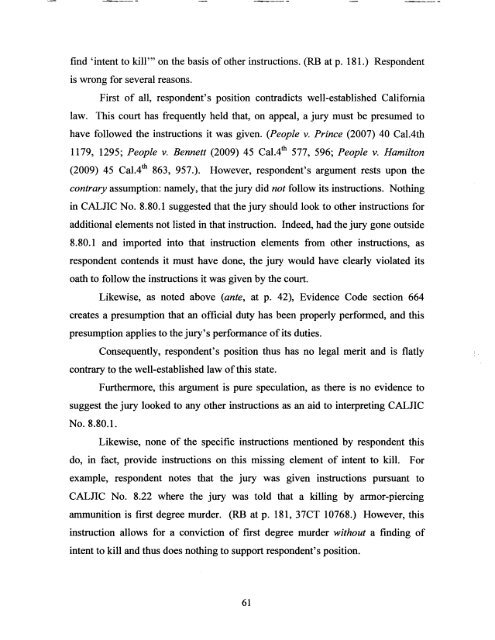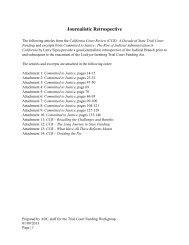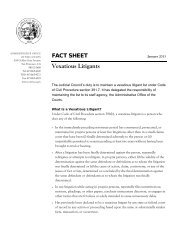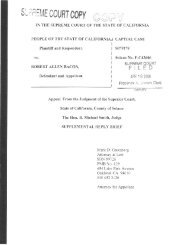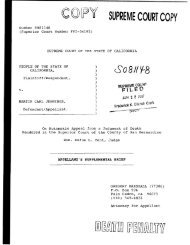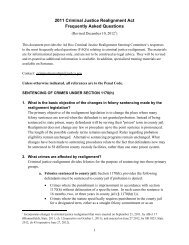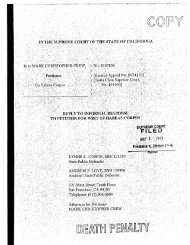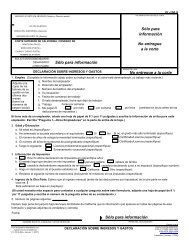Appellant, William Satele, Reply Brief - California Courts - State of ...
Appellant, William Satele, Reply Brief - California Courts - State of ...
Appellant, William Satele, Reply Brief - California Courts - State of ...
You also want an ePaper? Increase the reach of your titles
YUMPU automatically turns print PDFs into web optimized ePapers that Google loves.
find 'intent to kill'" on the basis <strong>of</strong>other instructions. (RB at p. 181.) Respondent<br />
is wrong for several reasons.<br />
First <strong>of</strong> all, respondent's position contradicts well-established <strong>California</strong><br />
law. This court has frequently held that, on appeal, a jury must be presumed to<br />
have followed the instructions it was given. (People v. Prince (2007) 40 Ca1.4th<br />
1179, 1295; People v. Bennett (2009) 45 Ca1.4 th 577, 596; People v. Hamilton<br />
(2009) 45 Ca1.4 th 863, 957.). However, respondent's argument rests upon the<br />
contrary assumption: namely, that the jury did not follow its instructions. Nothing<br />
in CALnC No. 8.80.1 suggested that the jury should look to other instructions for<br />
additional elements not listed in that instruction. Indeed, had the jury gone outside<br />
8.80.1 and imported into that instruction elements from other instructions, as<br />
respondent contends it must have done, the jury would have clearly violated its<br />
oath to follow the instructions it was given by the court.<br />
Likewise, as noted above (ante, at p. 42), Evidence Code section 664<br />
creates a presumption that an <strong>of</strong>ficial duty has been properly performed, and this<br />
presumption applies to the jury's performance <strong>of</strong>its duties.<br />
Consequently, respondent's position thus has no legal merit and is flatly<br />
contrary to the well-established law <strong>of</strong>this state.<br />
Furthermore, this argument is pure speculation, as there is no evidence to<br />
suggest the jury looked to any other instructions as an aid to interpreting CALnC<br />
No. 8.80.1.<br />
Likewise, none <strong>of</strong> the specific instructions mentioned by respondent this<br />
do, in fact, provide instructions on this missing element <strong>of</strong> intent to kill. For<br />
example, respondent notes that the jury was given instructions pursuant to<br />
CALnC No. 8.22 where the jury was told that a killing by armor-piercing<br />
ammunition is first degree murder. (RB at p. 181, 37CT 10768.) However, this<br />
instruction allows for a conviction <strong>of</strong> first degree murder without a finding <strong>of</strong><br />
intent to kill and thus does nothing to support respondent's position.<br />
61


